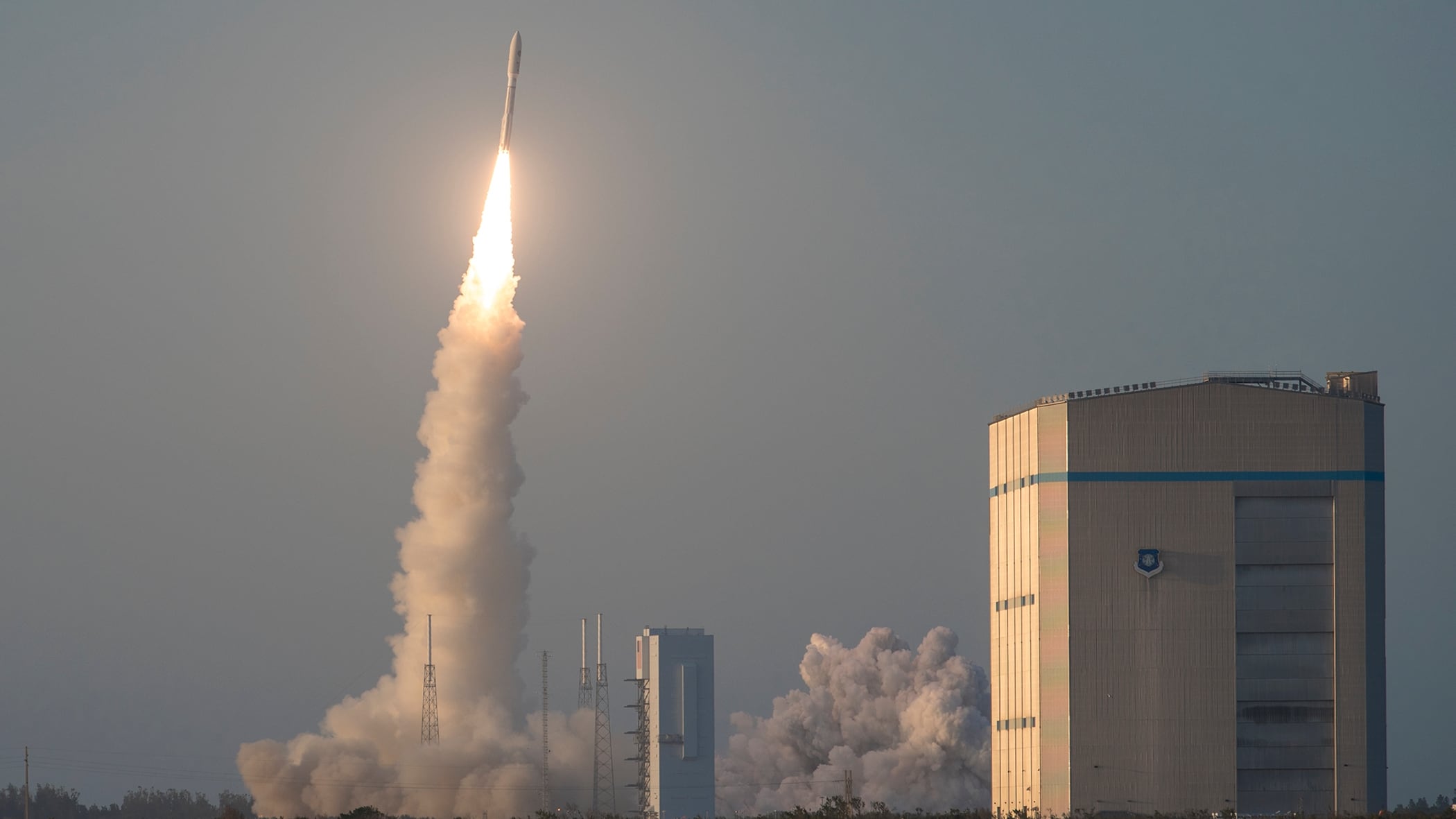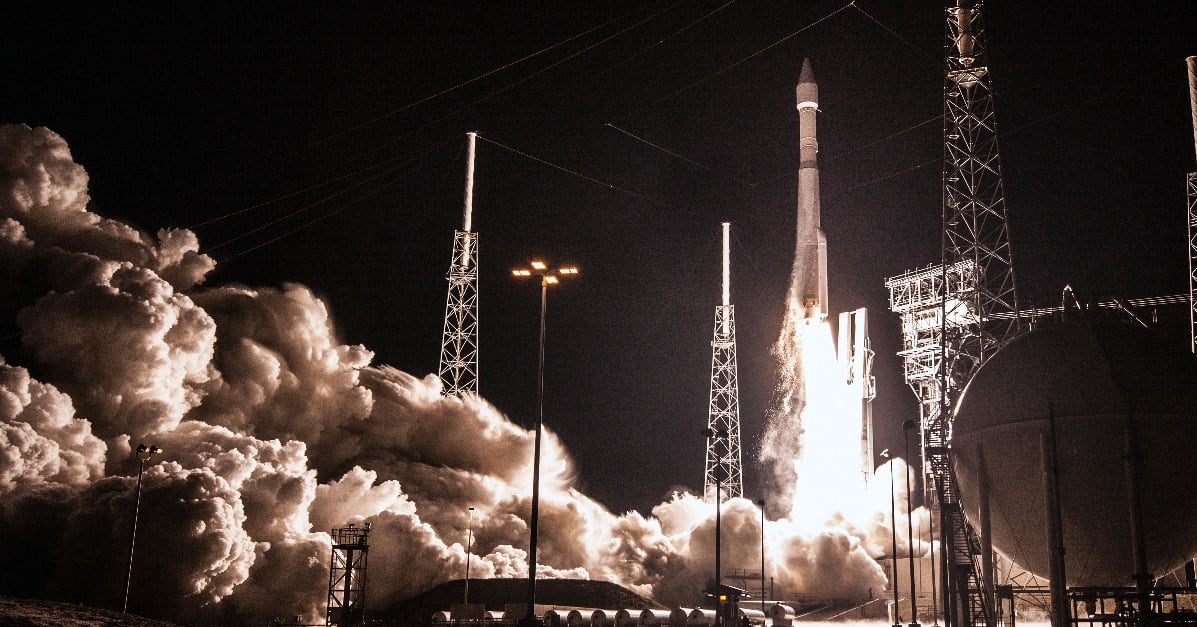WASHINGTON — President Donald Trump on Tuesday signed a directive centralizing all military space functions under a new Space Force, which will be overseen by the Department of the Air Force.
While it is technically up to Congress to approve the creation of the Space Force, a sixth military branch that would organize, train and equip a corps of military space personnel, Trump’s signing of Space Policy Directive 4 marks the first time the administration has made clear how the new service would fit into the existing military structure.
“Today, I’m thrilled to sign a new order taking the next step to create the United States Space Force," Trump said during the signing ceremony. "So important, when you look at defense, when you look at all of the other aspects of where the world will be someday. I mean, this is the beginning. This is a very important process.”
According to SPD-4, the Space Force will initially reside under the Department of the Air Force and it will be led by a civilian undersecretary of the Air Force for space as well as a four-star general serving as the Space Force chief of staff — a measure that is less ambitious than the stand-alone service originally envisioned by the president.
RELATED

An Air Force-led space service is thought to be more palatable to congressional critics, and coincides with draft versions of the legislative proposal that circulated throughout the Pentagon over the past months, which Defense News first reported on in December.
However, an administration official who spoke to reporters Tuesday morning maintained that putting the new service under the Air Force was “a step toward a future separate military department for space” and that the administration would make periodic reviews to see when it would make sense to deliver a second legislative proposal calling for a separate Department of the Space Force.
One of the biggest congressional critics of a separate space service, Rep. Mike Turner, R-Ohio, released a statement seemingly in support of SPD-4. That would be a massive reversal from his previous stance, which saw Turner trying to block legislation to stand up a Space Corps in 2017.
“Today’s signing of the Space Policy Directive – 4 is the first step in a process which may create the capabilities we need to ensure our success in the domain of space,” said Turner, who is the top Republican on the House Armed Services Strategic Forces subcommittee.
"I believe it is important that space capabilities remain under the Air Force’s domain As we look towards Congress’s responsibility in legislating further on this issue, I look forward to working with my counterparts on the Strategic Forces Subcommittee to ensure that the President’s proposal satisfies our space needs, is cost effective, and results in increased capabilities.”
SPD-4 stipulates that all uniformed and civilian personnel currently supporting space operations will funnel into the Space Force. That means that certain Army and Navy personnel could find themselves in a new service under the discretion of the Air Force.
“We don’t anyone to be hurt if they transfer over into the Space Force,” the administration official said. “We’ll be moving, I think, fairly slowly, focusing on the headquarters functions to begin with, and then there will a lot of activity that will simply be moved over for people doing space operations. Then we will be laying out career tracks for people farther up.”
Meanwhile, intelligence agencies like the National Reconnaissance Office will continue to reside separately from the Space Force, as will agencies like NASA and the National Oceanic and Atmospheric Administration.
It’s still unclear how much it will cost to stand up the service. The senior administration official told reporters that initial costs would amount to less than $100 million on top of what the services already budgeted to carry out space operations, but there may be a need to increase funding for military space activities in the future.
“If we take more aggressive actions for building up resiliency of our systems, creating counter-space capabilities and counter adversary threats, those things will cost more money,” he said.
In September, the Air Force released its own $13 billion estimate of the costs over the next five years to stand up both a Space Force and a U.S. Space Command, a unified combatant command that will oversee space operations. That proposal also would integrate elements of NRO with the Space Force — a path of which the administration opted out.
Air Force Secretary Heather Wilson said she stands by that estimate, even as Patrick Shanahan, now the acting secretary of defense, contends that creating a Space Force could cost less than $5 billion.
RELATED

During an event at the Brookings Institution on Tuesday morning, Air Force Chief of Staff Gen. Dave Goldfein confirmed that the president would sign off on a plan laying out how the Space Force would be organized.
But the most important step to move space operations forward, Goldfein argued, is to set up a U.S. Space Command led by a four-star combatant commander — a move that does not need the approval of Congress and is separate from the Space Force directive.
RELATED

“What’s going to roll out today is a service within the Department of the Air Force,” he said. “There’s a thousand decisions that have to be made to be able to work to the intricate details of how we move forward in establishing the service within the Department of the Air Force. But essential to me though, first and foremost, is the combatant command.”
As only Congress can create a new branch of the military, the administration’s next step is putting forward a “legislative proposal” that the House and Senate can consider passing into law.
“We’re going to get the proposal up to them as soon as we can. Initial informal conversations, I think, have been very encouraging,” the administration official said. “I think it can get done this year.”
Trump apparently agreed, telling reporters that he expects the Space Force proposal to have “great support” from Congress.
Valerie Insinna is Defense News' air warfare reporter. She previously worked the Navy/congressional beats for Defense Daily, which followed almost three years as a staff writer for National Defense Magazine. Prior to that, she worked as an editorial assistant for the Tokyo Shimbun’s Washington bureau.









